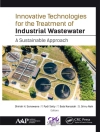Northern Tanzania is an important and diverse ecological and cultural region with many protected lands. This book, Protected Areas in Northern Tanzania, brings to the forefront research on significant issues and developments in conservation and management in national parks and protected lands in northern Tanzania. The book draws attention to issues at the intersection of conservation, tourism, and community livelihood, and several studies use geospatial technologies—Geographic Information Systems and remote sensing data and techniques—to study land use and land cover conversion. With contributions from professors at the Mweka College of African Wildlife Management located at the foot of Mount Kilimanjaro and other Tanzanian researchers, the book provides important perspectives of local experts and practitioners. Protected Areas in Northern Tanzania provides a significant contribution in research and technological advancement in the areas of wildlife conservation and protected land management throughout this critical region.
表中的内容
Chapter 1: Protected Areas in Northern Tanzania: An Introduction.- SECTION I: Communities and Management Challenges.- Chapter 2: A Geography of Protected Areas.- Chapter 3: Conservation Governance in Northern Tanzania: Implications for Conservation and Community Livelihood.- Chapter 4: Wilderness Skills Offering to Students.- Chapter 5: Hunting in Tanzania: Opportunities and Challenges.- Chapter 6: Tourism Supply System.- Chapter 7: Response of Cavity Breeding Birds on Shortage of Deadwood Outside Protected Areas.- Chapter 8: Historical Change in Porter Work on Kilimanjaro.- SECTION II: Geospatial Technologies, Land Cover, and Conservation in Northern Tanzania.- Chapter 9: Land Cover Change in the Kwakuchinga Wildlife Corridor.- Chapter 10: Mkomazi National Park Vegetation Dynamics.- Chapter 11: Spatiotemporal Patterns of Giraffe Poaching Around Arusha National Park.- Chapter 12: Community Forestry in Northern Tanzania.- Chapter 13: Illegal Logging in Arusha National Park.- Chapter 14:Protected Areas in Northern Tanzania: The Way Forward.
关于作者
Jeffery Durrant (Ph.D., University of Hawaii) is an Associate Professor of Geography at Brigham Young University. Durrant primarily studies public lands and protected areas. His research interests include motorcycle studies, art, and Africa.
Leslie Hadfield (Ph.D., Michigan State University) is an Associate Professor of History and the Africana Studies Coordinator at Brigham Young University. Hadfield primarily studies South African contemporary social and political history. Her research interests include South African liberation movements and the experience of black nurses in the Eastern Cape. Oral history is an important part of her work.
Perry Hardin (Ph.D., University of Utah) is a Professor of Geography at Brigham Young University. Hardin primarily studies culture and geography of Africa and Central Asia with expertise in remote sensing, Geographic Information Systems, and geographic methods. His research interests include remote sensing of urban areas and land cover change.
Ryan Jensen (Ph.D., University of Florida) is a Professor of Geography at Brigham Young University. Jensen primarily studies biogeography and landscape ecology with expertise in remote sensing and Geographic Information Systems. His research interests include land cover change and carbon dynamics.
Emanuel Martin (Ph.D., Sokoine University of Agriculture) is Lecturer and Head of Research, Consultancy, and Post Graduate Studies at the College of African Wildlife Management. Martin has expertise in wildlife management and wildlife policy. His research interests include forest mammal ecology and modelling, and protected areas planning and management.
Kokel Melubo (Ph.D., University of Otago) is a Senior Lecturer at the College of African Wildlife Management. Melubo is actively involved in student field training and lecturing at CAWM as well as a USAID project to train Kilimanjaro porters in managing their resources and obtaining better working conditions. He has expertise in tourism and its interactions with local people, community well-being, corporate social responsibility and tourism, and the work of guides and porters in the tourism industries. His research interests include works to detail Maasai indigenous knowledge as it relates to conservation and tourism.
Laurie Weisler (M.S., Brigham Young University) is an office administrator in the Geography Department at Brigham Young University. Weisler has expertise in editing and management. Her interests include literacy, gender studies, and the people and wildlife of Tanzania.












